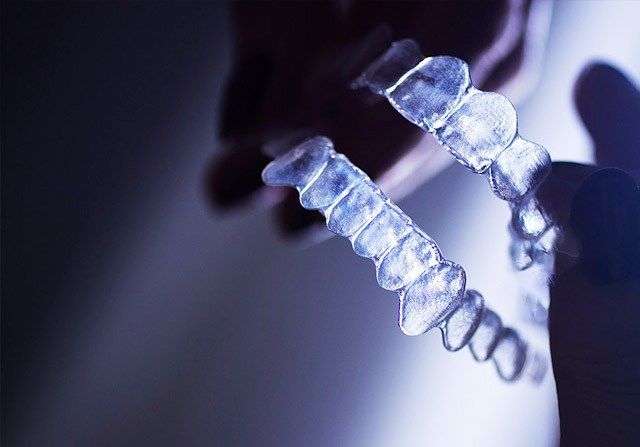 Open wechat
Open wechat
1、 Invisible correction technology
Throughout the development of orthodontic treatment technology for more than 100 years, while paying attention to improving the correction efficiency, the pursuit of aesthetics in the correction process has never stopped. How to make the appliance more "invisible" has gradually become the development goal of aesthetic correction.
1. Invisible measures in fixed orthodontic techniques
Lingual appliance and transparent bracket are two aesthetic choices in fixed orthodontic techniques. Lingual orthodontics was first patented and applied by American doctor craren Kurz in 1976. It was named "lingual invisible orthodontics" because it concealed the inside of the thousand arch. However, the technology was difficult to operate and took a long time to treat. After entering the 1980s, it once fell into a trough. At the same time, with the development and improvement of thousands of natural color materials of teeth, aesthetic brackets began to appear one after another. Among them, ceramic brackets have become another kind of fixed appliance with good concealment because of their stable color and good durability. However, the disadvantages of ceramic brackets such as high friction, low fracture toughness, abrasion of enamel during occlusal contact and enamel damage during removal also limit their application. It seems that only when used in the upper anterior segment can the balance between aesthetics, safety and treatment efficiency be achieved.
In recent years, with the development of indirect bonding technology, new arch wire materials and the introduction of computer-aided design and manufacturing technology, the once neglected lingual correction technology began to rise in European countries, especially the customization of personalized bracket bottom plate and the establishment of robot remote CNC arch wire bending system, It makes the lingual correction technology continue to undertake its mission as "invisible fixed correction technology" with a new look. These are the progress of fixed orthodontic technology, which meets the needs of aesthetic orthodontic treatment to a great extent, but the new moon of modern scientific and technological means is also promoting the invisible goal of orthodontic technology.
II. Development of covered appliance and contemporary invisible correction technology
(1) Dental positioner: in 1945, American doctor kesling designed a kind of dental positioner made of rubber. Although it is a retaining device, it is made after micro photographing and moving the tooth position on the model, so it has a certain correction effect. Kesling used this positioner for fine adjustment and maintenance after fixed correction. After entering the 1960s, with the development of vacuum hot pressing film technology, transparent retainers began to be popularized and applied in orthodontic clinic. Therefore, many scholars also followed the above practice and made transparent covering retainers with certain orthodontic effect by rearranging the teeth on the model for thousands of cases that did not reach the ideal position punishment and had a slight recurrence after correction This should be the original "invisible appliance"
(2) Raintree essix Technology: Raintree essix technology was proposed by Professor Sheridan. He further developed and standardized the model tooth arrangement technology, adjacent surface enamel removal technology and hot pressing film technology from the aspects of materials and means, and began to produce transparent covered appliances for treating simple malocclusion in 1994, In essix technology, more orthodontic batches are obtained by changing the shape of the original appliance by using Hilliard thermoforming forceps and resin accumulation on the tooth surface. However, due to the limitation of the ductility of orthodontic materials, the frequent pouring model and time-consuming manual tooth arrangement can not be avoided for the more complex powder staggering problem. Therefore, essix technology can not realize the real correction function in terms of work efficiency, accuracy and scope of indications.
(3) Invisible orthodontic technology in 1997, align company of the United States applied digital model reconstruction technology and laser rapid prototyping technology to the concept of the above covered appliance, so that the design of tooth movement and the model making in the orthodontic stage do not need to be made by hand. So far, the aesthetic appliance has entered a new stage, the era of invisible correction. Invisible orthodontic technology first designs the tooth movement step by step based on the digital three-dimensional dental model, then outputs the digital model of each step through rapid prototyping, and finally uses the solid model as the master plate to manufacture the appliance through hot pressing film forming technology. Align company named this technology "invisa align", which means invisible aligner. It can be seen that invisible orthodontic technology is an orthodontic treatment technology based on computer-aided design and manufacture and completed by a series of transparent removable appliances.

